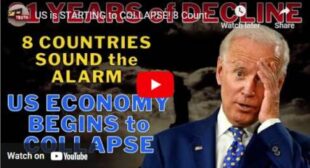This is because, in their view, continuing to raise rates sharply would increase the risk of instability or disruption to the US financial system and the US national debt. However, Fed policymakers also agreed that inflationary pressures show little sign of abating and that rate hikes must continue in order to contain inflation. A slowdown does not mean a halt, but rather more rate hikes.
Therefore, it may be necessary to raise the terminal rate in 2023 to a level slightly higher than previously expected. This suggests that the Fed will go on to raise interest rates more often and in longer cycles than the previously announced path. This bodes well for higher interest costs on debt paid by the US and more expensive credit.
On 24 November, the Chicagoland CME Interest Rate Watch tool showed that the market now expects the current rate hike cycle to peak in June 2023, with a rate range target of 5.0%. The Fed’s interest rate trajectory is expected to turn dovish as expectations of a final rate decline and subsequent rate cuts rise. The Fed had already pushed the federal funds rate to between 3.75% and 4% in the November FOMC meeting, with the last time rates were this high in January 2008.

